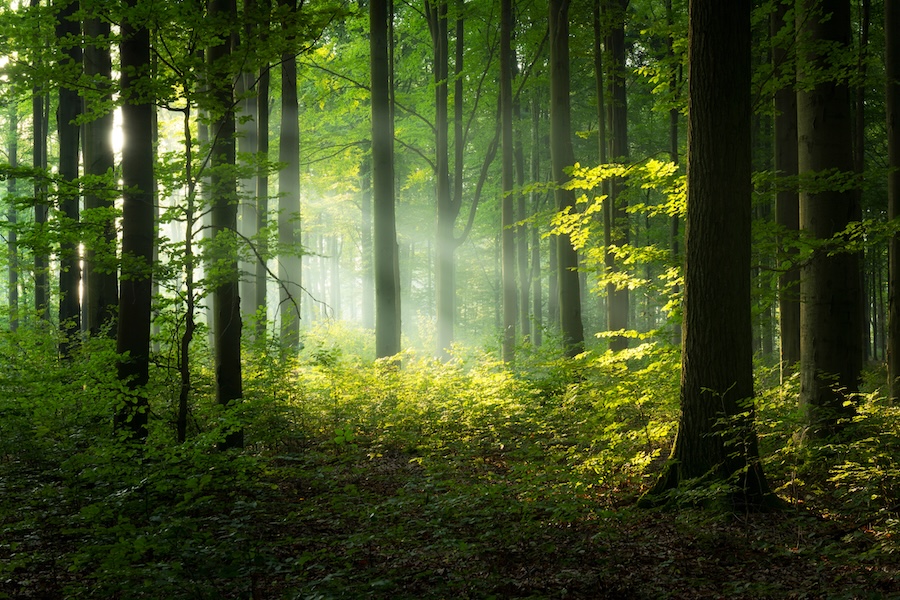The forest cover buffers the macroclimate and plays an important role in mitigating global warming. A study compared the effect of stands with different proportions of deciduous/coniferous trees on the forest microclimate in different forests in Sweden, Belgium and Germany. The air and soil temperature was continuously measured for more than a year. These measurements were coupled with the use of a simulation model.
It is the forest structure and in particular its density (basal area and canopy openness) that best explains the temperatures measured in the understorey, with a greater buffering effect as the basal area increases. The proportion of hardwoods also improves the buffering effect but to a lesser extent and only in the growing season.
According to their model:
- Increasing the basal area reduces the average soil temperature and the average and maximum air temperatures in summer.
- Increasing the basal area also increases the minimum air temperatures in summer and winter and the average air temperature in winter. This buffering capacity of the canopy also varies with temperature, rainfall and wind.
- One disadvantage of a high basal area could be the darkening of the understorey, compromising the renewal of species that are not very tolerant of shade. One solution would be to increase the basal area by planting broad-leaved species with low shade tolerance, such as oak or birch. These species have a canopy that is more permeable to light, while providing a temperature buffer that is just as effective as more shade-tolerant species.
- The role of the vertical structuring of the stand on the microclimate in the understorey has yet to be studied in depth.
These elements confirm the forest’s potential to provide climatic refuge and mitigate the impact of global warming on species and phenology.


